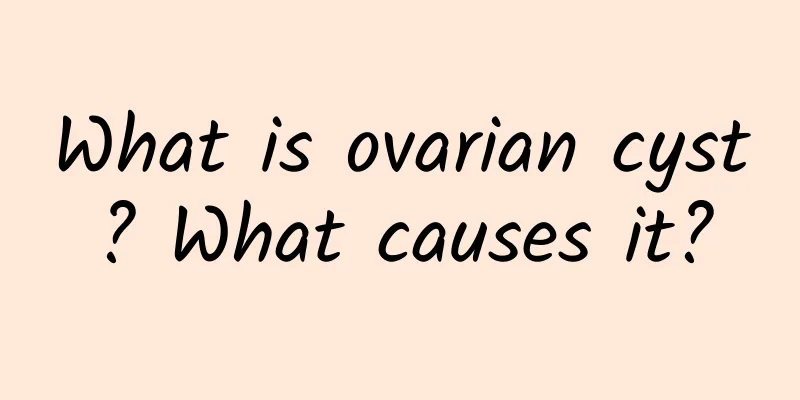What should I do if I have cervical warts?

|
There are more and more forms of condyloma acuminatum, especially in women. The site of onset is uncertain and the forms of onset are diverse, which has caused troubles to many women. The occurrence of cervical warts has seriously affected the lives of patients. So what should I do if I have cervical warts? Patients with cervical condyloma mainly present with increased leucorrhea, vulvar itching, bleeding after sexual intercourse, vaginal bleeding after menopause, etc., or seek medical treatment for vulvar warts. Some patients have a history of vulvar warts several months or years ago, or their sexual partners have a history of genital warts. About 18% of patients have no clinical symptoms. Gynecological examinations reveal cervical warts, which grow outward in cauliflower, nipple, or mulberry shapes, of varying sizes, with single or multiple lesions, and warts can be seen in the vulva and vagina at the same time. Cervical warts often manifest as local papular or maculoid lesions on the cervix, which are more common in flat shapes. Flat warts are patchy and rough like moss, so the clinical manifestations are not significant, also known as subclinical warts and atypical warts. (1) Colposcopy can reveal lumpy or cauliflower-like protrusions in the lesions such as the cervix. Irregular woolly ball-like vascular loops can be found in the villi. The lesions turn white after acetic acid is applied. Papular lesions are densely and symmetrically distributed bubble-like or single finger-like protrusions. After acetic acid is applied, the blood vessels disappear and the lesions turn white. Cervical flat condylomata are white epithelial, with or without punctate blood vessels or in a mosaic pattern. (2) Polymerase chain reaction (PCR) detection: HPV DNA, the positive rate is 97.9%, and the sensitivity and specificity are 90%. (3) Histological examination: Typical hollow cells may be seen under the microscope. HPV virus particles may be seen under electron microscopy. Immunohistochemical examination may show viral antigens. Treatment of cervical warts: Cervical warts should be treated with local destructive treatments, such as laser, freezing, electrocoagulation, etc. When pregnancy is complicated by cervical warts, local treatment should be performed before 34 weeks of pregnancy to avoid complications such as cervical laceration during delivery; if pregnancy is full-term and complicated by large cervical warts, cesarean section should be performed. Experts remind that if you have cervical problems, don't be nervous. Most cervical problems can be effectively treated. But you must remember that you should go to the gynecology clinic of a regular hospital to treat cervical diseases. Don't listen to medical advertisements or take medicine on your own. Don't go to irregular hospitals or clinics to avoid being deceived and delaying the treatment. |
<<: What should I pay attention to when I have uterine effusion?
>>: What department does cervical warts belong to?
Recommend
Causes and prevention of acute adnexitis
In medicine, acute adnexitis is the inflammation ...
What does threatened miscarriage mean?
Everyone knows that there are many ways of miscar...
What painkillers to take for dysmenorrhea
When you have dysmenorrhea, choosing the right pa...
Vaginal bleeding may be an early symptom of ectopic pregnancy
There are many early symptoms of ectopic pregnanc...
What to eat after a miscarriage to help your uterus recover?
After a miscarriage, you may be in a state of qi ...
Should I do six-item estrogen test for amenorrhea?
Amenorrhea may require an estrogen test to help i...
You don’t have to starve to lose weight! Eating this way reduces fat absorption
"Women" refer to humans who are classif...
What should I not eat if I have a small uterine fibroid? What are the dietary taboos for a small uterine fibroid?
What should I not eat if I have a small uterine f...
How long after giving birth is normal for menstruation
It is normal to resume menstruation about 6-8 wee...
What are the common tests for vaginitis?
Examination is an important means of diagnosing d...
What medicine can be used to relieve dysmenorrhea?
If it is just simple dysmenorrhea, you can take d...
Eat no more than 2 Yuanxiao per meal! Exercise more to burn calories
Today is the Lantern Festival, commonly known as ...
What is the cause of cervicitis viral infection
Cervicitis viral infection is usually caused by a...
Estrogen for menopausal treatment
Studies have shown that a woman will release abou...
Can I get pregnant naturally with adenomyosis?
The presence of adenomyosis has a great impact on...









